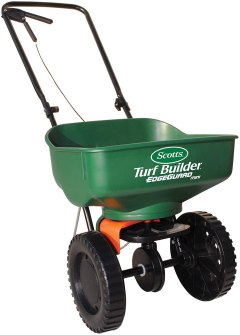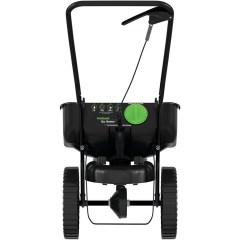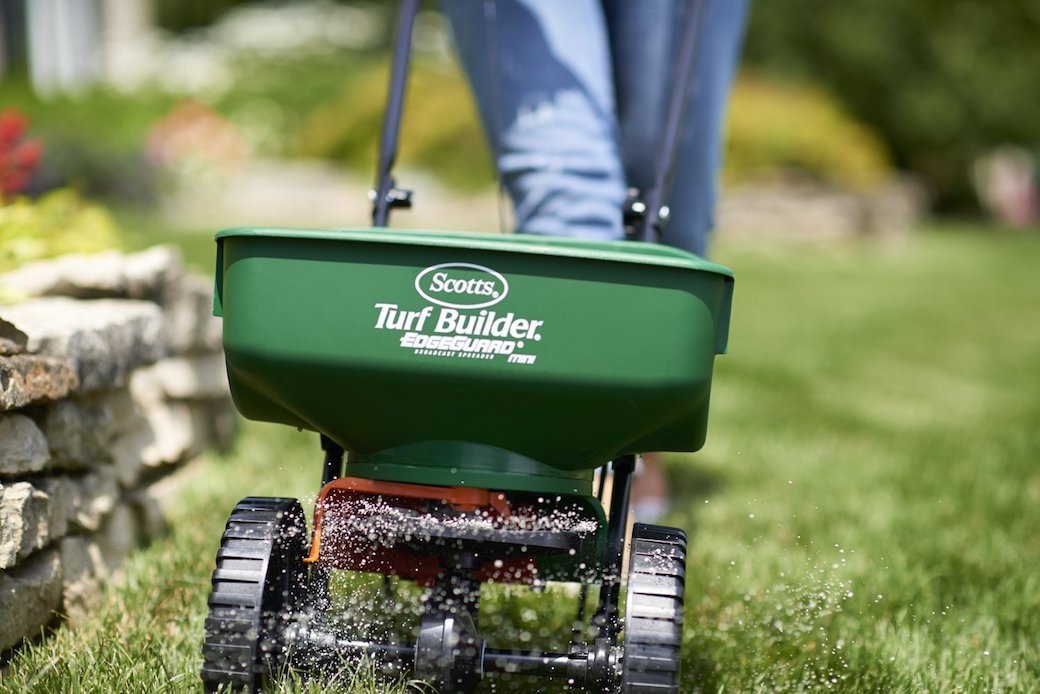Buying guide for Best fertilizer spreaders
Not everyone needs a fertilizer spreader, but they can make certain jobs much easier. Whether you need to resow dried patches of lawn or add a nutrient boost to a broad swath of cultivated land, a fertilizer spreader will help you to do so more quickly and efficiently.
A fertilizer spreader applies fertilizer and other lawn care products to your lawn or garden. Adjustable openings help you control the application rate of the fertilizer so you don’t add too little or too much.
Fertilizer spreader benefits
You can disperse fertilizer by hand, but using a fertilizer spreader has many advantages.
Saves time
Using a fertilizer spreader is much faster than manually applying fertilizer, especially if you have a large area to cover. If your property is especially large, there are spreaders designed to be towed by riding lawn mowers or tractors, so you can finish the job even more quickly.
Spreads evenly
Spreading fertilizer by hand or a rake runs the risk of uneven application, which can burn patches of your lawn or property. With a spreader, you can choose a flow rate for the optimal distribution of the fertilizer. Many spreaders also have edge guards that keep the fertilizer from overflowing outside the intended target area. Fertilizer is expensive. Spreading the product evenly can help cut down on waste and save money.
Protects skin
Many fertilizers and other lawn care products contain harsh chemicals that shouldn’t come into direct contact with your skin. While you can don a pair of protective gloves, you’re more likely to risk skin irritation if you handle the stuff directly. A spreader keeps the product at a safe distance.
Types of fertilizer spreaders
There are three main types of fertilizer spreaders, each with advantages and disadvantages.
Handheld spreaders
Handheld spreaders are best suited for smaller gardens or patching a lawn's bare spots with grass seed.
Pros:
Cons:
Not ideal for people lacking upper body strength
Not ideal for large areas
Batteries need replacing (some models)
Drop spreaders
Drop spreaders deposit seeds and fertilizer down rather than spraying them.
Pros:
More precise distribution
Broader coverage than handheld units
Excellent choice for row gardens or oddly shaped lawns and flower beds
Tow-behind and push models
Better than other types in windy conditions
Cons:
Broadcast spreaders
Broadcast spreaders are also known as rotary spreaders. They spray or broadcast the fertilizer.
Pros:
Cons:
Liquid spreaders
Liquid spreaders are specifically designed to handle liquid fertilizer. These spreaders have canisters that hook up to a hose. Inside the canister is dry material that dissolves upon contact with water. You then spray the fertilizer through the canister’s nozzle.
Pros:
Cons:
For your safety
Make sure to wear gloves when handling fertilizer.
STAFF
BestReviews
Fertilizer spreader features to consider
Here are the main points to consider when looking for a fertilizer spreader.
Area: Take into account the area you need to fertilize. This will dictate the type of spreader you need. Handheld spreaders are suitable for smaller lawns or gardens. Drop and broadcast spreaders are better for larger areas. Spreaders come in different capacities. Look at the coverage estimate, which can range from 1,000 square feet to well over 40,000 square feet. The bigger the unit, the more fertilizer it can carry at once. If you have a big lawn, pick an appropriately sized unit so you don’t have to keep refilling your spreader.
Material: Most spreaders are made of either steel or plastic. Steel is more durable and expensive. Plastic is less expensive, but it’s also more likely to crack or warp over time.
Handles: Whether you select a handheld or push model, your spreader will have some type of handle or grip area. Make sure the handles are comfortable, especially on a handheld spreader.
Size and weight: While a larger unit may offer greater capacity and coverage, it could also be more cumbersome to move around. Think about where you will store your spreader when it’s not in use. For handheld spreaders, some are designed to sling over the shoulder to help distribute the weight.
- Distribution: The wider the distribution area, the better the coverage and the more quickly you’ll finish the job. Some spreaders allow you to adjust the spread width, giving you more control over fertilizer application.
Did you know?
Many fertilizer spreaders have a flow-rate dial that allows you to adjust the size of the hole. A larger opening equals a higher flow rate.
STAFF
BestReviews
Tips
Calibrate your fertilizer spreader. The instructions should be included with the spreader. Some spreaders may come precalibrated, eliminating the need for you to do so manually, but not every company’s spreader is precisely calibrated.
Test your new spreader on a paved surface. That way, you can make sure the selected flow rate works for your needs.
Fill up the spreader on pavement. Filling on pavement, such as a driveway, makes it easier to scoop up any spilled fertilizer.
Move slowly and steadily. Don’t rush when using your spreader or you’ll risk missing spots or applying fertilizer unevenly.
Avoid applying too much fertilizer. If you have to stop or turn around, make sure the spreader opening is closed.
Clean the spreader after each use. This will help avoid contamination and premature wear.
- Lubricate the spreader’s wheels. This will help it roll smoothly.
Fertilizer spreader prices
In general, the greater the spreader’s capacity, the higher the price. Handheld models are the most economical type.
Under $20: At this price point, you’ll find mostly handheld models, some battery operated, with a maximum capacity of 2,500 square feet.
$20 to $50: Broadcast spreaders with push handles are the most commonly available type in this price range.
$50 to $150: In this range, expect to find larger capacity broadcast spreaders, drop spreaders, tow-behind units, and battery-powered handheld spreaders.
- $150 and up: The most expensive units are larger capacity broadcast spreaders with heavy-duty construction. Most of the models in this price range are meant for commercial or professional use.
FAQ
Q. Can I use a fertilizer spreader for grass seed?
A. Yes. But grass seed has a different consistency than fertilizer, so it may not flow evenly through your spreader.
Q. Can I apply fertilizer any time?
A. In colder areas, the snowy winter months aren’t ideal for spreading fertilizer, and when temps rise over 85°F, you risk burning your lawn. It’s also best to avoid spreading lawn care products on very windy days.
Q. Is spreading fertilizer a danger to children and pets?
A. No, but you should wait about 24 hours before allowing kids or furry friends to play on the lawn.
























